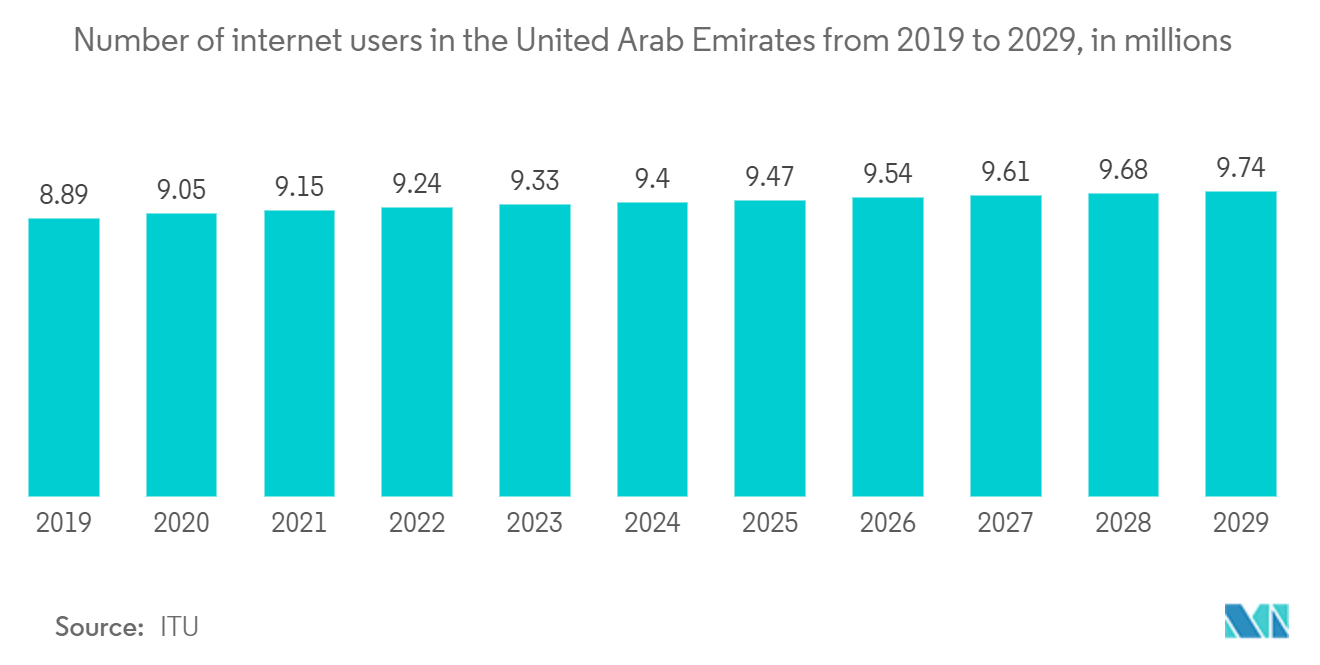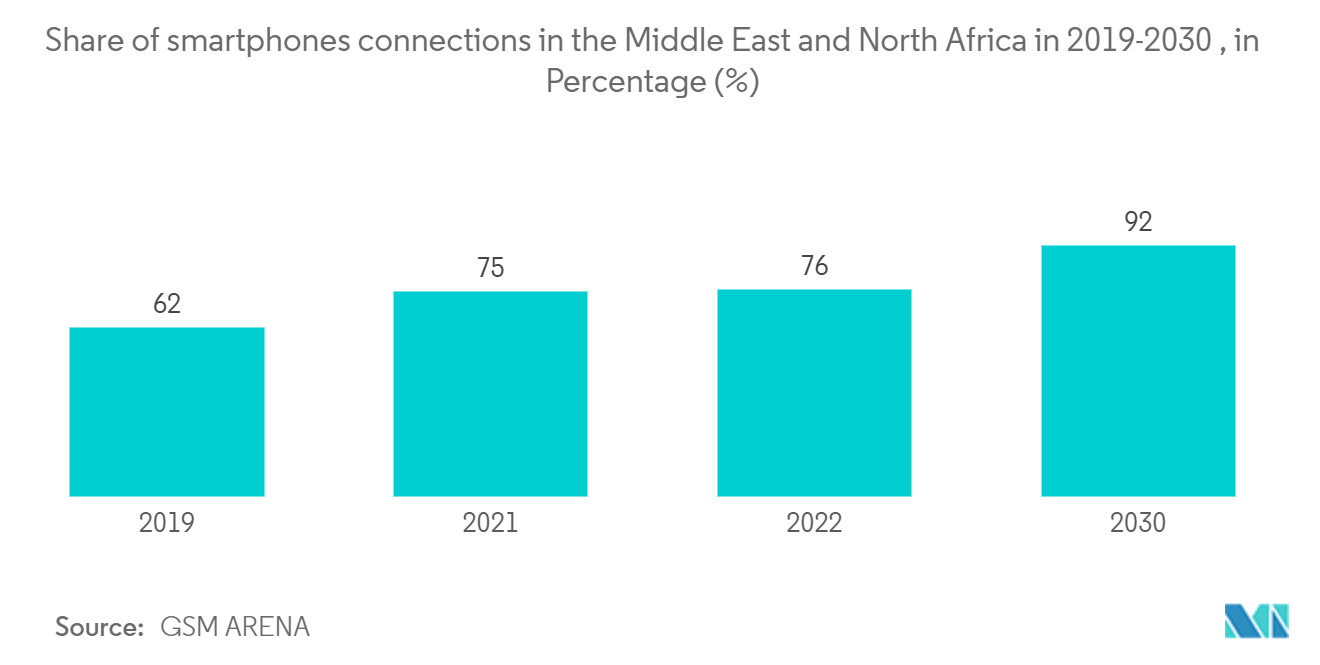Market Trends of Middle East And Africa E-commerce Industry
The Adoption of Latest Technology is Increasing
- The expanding array of digital channels is paralleled by a rising user base. A survey by Standard Chartered showed that around 50% of consumers in the region favored online transactions over traditional card or cash payments, marking a notable shift in consumer behavior.
- Rising ICT adoption is a catalyst for financial inclusion, with heightened participation from the financial sector being crucial for the growth of e-commerce. The swift expansion is undeniably bolstered by the widespread adoption of advanced mobile phones and improved internet accessibility.
- Technological advancements significantly influence the market. A prominent trend is the growing adoption of artificial intelligence (AI) and machine learning (ML) to tailor the shopping experience, enhance product suggestions, and elevate customer service. Furthermore, the surge of social commerce, influencer marketing, and virtual reality (VR) shopping is reshaping consumer interactions with online platforms.
- These technologies not only provide a more personalized and engaging shopping experience but also help businesses understand consumer behavior better, optimize their operations, and stay competitive in a rapidly evolving market. As a result, companies that leverage these advancements are likely to see significant growth and improved customer loyalty.
- A growing cohort of African SMEs is actively establishing their digital footprint, developing websites, and securing email addresses. This strategic shift is geared toward strengthening their e-commerce ventures and amplifying their export potential. Although B2B e-commerce in Africa initially trailed its retail segment, forecasts indicate a reversal, with B2B set to surpass B2C growth, potentially doubling by 2030. A significant driver of this surge is the rising prevalence of digital payment methods.
- Sustainability and eco-consciousness are on the rise. Consumers are increasingly becoming aware of the environmental repercussions of their purchases. In response, e-commerce platforms are championing eco-initiatives, including eco-packaging, carbon offsets, and featuring products from ethical, sustainable brands. This mirrors the global move toward conscientious consumption, opening doors for e-commerce retailers to align with the changing values of Middle Eastern buyers.
- A survey conducted by logistics firm UPS showed that despite two-thirds of Middle Eastern customers anticipating digital service accessibility, around 67% of the region's SMEs did not provide any online sales. Similarly, Gartner's findings highlighted that only 15% of businesses in the region maintain an online footprint.

The Usage of Smartphones is Increasing
- The increasing significance of smartphones in digital commerce is driven by robust connectivity, rising smartphone ownership, and increasing affluence, particularly in the Gulf. In South Africa, the adoption of budget-friendly smartphones and feature phones with smart capabilities shifted consumer behavior from PCs to mobile devices for digital transactions.
- Key drivers of this shift encompass mobile retailing, banking, social media engagement, and promotions delivered through mobile devices. Enabled by partnerships with major digital wallet providers and a diverse array of local retailers, consumers can make payments directly from their phones. The trend of proximity payments, initially aimed at financial inclusion in rural Africa, is poised to gain momentum, evolving into a symbol of convenience in the Gulf.
- Android smartphones have recently made significant strides in integrating artificial intelligence and virtual assistant software, such as Google Assistant, which enables users to issue voice commands, rivaling Apple's Siri in iPhones. With these advancements, Android is steadily evolving, integrating new elements in its successive versions to enhance its products.
- In the Middle East, the e-commerce landscape boasts a broad spectrum of product categories. Notably, fashion and beauty segments experienced remarkable growth, propelled by the region's fashion-forward populace. This surge led to the rise of online marketplaces and specialized fashion platforms, meeting the escalating demand for stylish apparel, accessories, and beauty products.
- Moreover, the electronics and home appliances domain commands a substantial market share, buoyed by the region's high smartphone penetration and tech-savvy consumers. Concurrently, there has been a notable uptick in the demand for groceries, health and wellness items, and online food delivery services, further boosting the e-commerce market.
- Heightened competition in the region is driving product innovations as players vie to introduce cutting-edge features and dominate the market. Several regional states are ramping up investments to broaden their commercial 5G network coverage. In preparation for commercial rollouts, both Etisalat and Ooredoo are actively conducting live 5G trials, focusing on speed, equipment, latency, and beam steering for enhanced signal reach.


